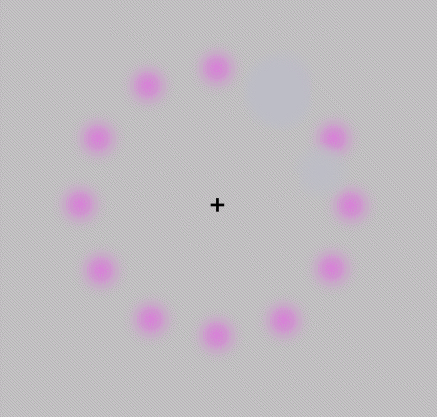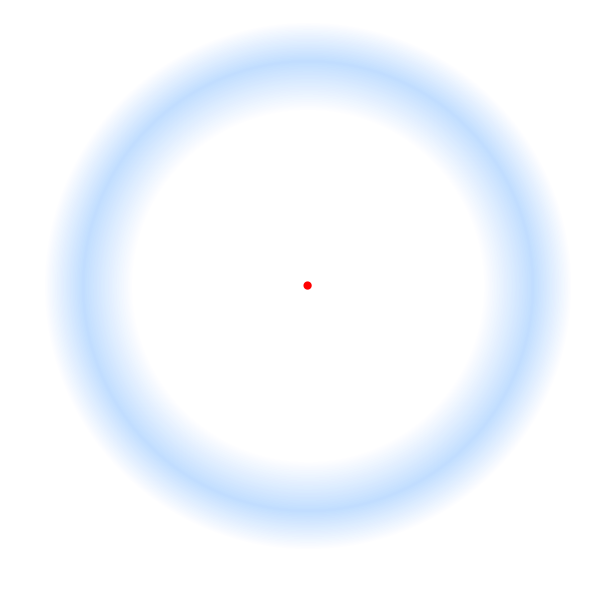Troxler’s Fading
Posted by thomas-cummins on 20 Jan 2009 at 04:10 am | Tagged as: design, video/film
The above image is an optical illusion sometimes referred to as the Lilac Chaser. It’s the result of several different known visual phenomena including:
Negative Afterimage – The everyday experience we have when we see something very bright and then continue to see its floating silhouette even after we look away from it. The neutral gray background seen here works to enhance this effect and this interactive site allows you to change the dot’s color to see opposing ghost colors.
Troxler’s Fading – First discovered in 1804 by Ignaz Troxler. Basically, we have a blind spot in the middle of our vision (called Scotoma) but we constantly make up for it by having two eyes, rapid eye movement, and also a brain that fills-in the missing information. Unvarying stimuli, however, is able to escape our focus. Similarly, we may feel our clothes when we first put them on but we soon forget about them even though they are still probably touching millions of neurons on our skin right now. A similar illusion is seen below and you can also test your blind spot at this website.


THE MASS OF THE PHOENIX
oh it removed the image. clicky on my name for more fun
nice posts – thanks… more please:)
oh yeah can’t forget my favorite (again click my name)
thanks for sharing, kevin. hadn’t ever seen that first one you posted – “rotsnake.” it’s quite remarkable.
no problem. i’ve been into op art lately so there’s plenty more where that came from.
search torrents for ‘optical illusions’ – hundreds to be found… enjoy:)
Wikipedia’s list found here -
http://en.wikipedia.org/wiki/Category:Optical_illusions
That’s where I found this spinning dancer -
http://en.wikipedia.org/wiki/The_Spinning_Dancer
Just saw that they list San Antonio’s ghost tracks as “Magnetic Hill.”
http://en.wikipedia.org/wiki/List_of_magnetic_hills
or a “Gravity Hill.”
http://en.wikipedia.org/wiki/Gravity_hill
Wikipedia suggests taking a date to the Ghost Tracks on Halloween night.
http://en.wikipedia.org/wiki/Autokinesis
http://en.wikipedia.org/wiki/Autokinetic_effect
To me, this Autokinesis explains the Marfa Lights.
http://en.wikipedia.org/wiki/Marfa_Lights
Ansen Seale told me he wrote a book on the Marfa Lights in which he used triangulation to prove that the lights coordinated with car lights on the highway. I’ve seen, with others, the red tower actually move. It doesn’t necessarily explain away the perceived intersubjectivity that multiple witnesses share though when they see the lights move. The main thing though is the flatness of the landscape which is why Judd chose that location in the first place. I remember driving at night there and seeing the headlights of cars approaching me from miles and several minutes away because it was so flat.